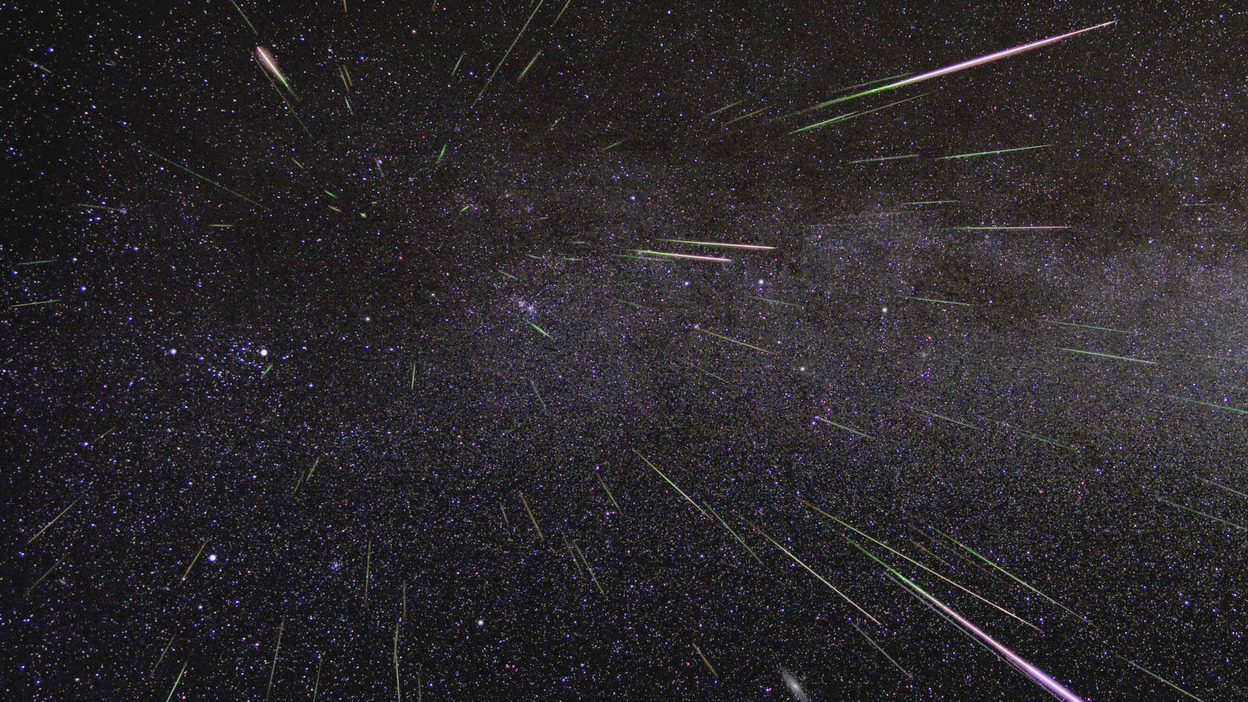
Perseid meteors originate from rocky debris left in the wake of comet 109P/Swift-Tuttle, strewn along its 133-year-long orbit. In the period from 17 July to 24 August, the Earth punches through this widely-dispersed cloud, causing particles to enter our planet’s atmosphere at speeds up to 58 kilometres per second (36 miles per second). At this velocity of almost 130,000 mph, friction with the air causes the debris to vaporise, creating the streak of light we call a meteor.
Amazingly, most meteors are caused by particles the size of a grain of sand; a spectacular fireball might be caused by something the size of a pea. While you might see lucky enough to see such an event on any moonless night over the month-long duration of the Perseid shower, the intensity and frequency of meteors reach a relatively short-lived peak around the night of 12–13 August. At this time you could, under dark and favourable conditions, see a shooting star every minute.
Predicting meteor shower maxima is a difficult science. The swarms of tiny meteoroid particles orbiting the Sun are easily deflected by the gravitational tugs of planets, so predicting when the Earth is most likely to intersect the densest clouds of this cometary debris is difficult. The best predictions indicate that peak activity will occur between 20h UT (9pm BST) on 12 August and 08h UT (9am BST) on 13 August.
With a day-old lunar crescent setting at the end of civil twilight on the night of the Perseid maximum, moonlight won’t be a problem this year. Weather permitting, conditions will therefore be perfect. Nautical dusk (when the Sun is 12 degrees below the horizon) occurs at 10:25pm BST on 12 August for the centre of the British Isles and full darkness falls at 11:38pm BST (don’t forget to consult our interactive Almanac to obtain precise sunset and twilight times wherever you live). Soon after midnight, the Perseid radiant lies about 40 degrees (twice the span of an outstretched hand at arm’s length) above the northeast horizon in the UK.
How to see the most meteors
Faint meteors are the most plentiful, so to maximise your chances you should find a safe location that is as far removed from streetlights and other sources of light pollution as you can and allow your eyes to become fully dark-adapted over 20 minutes or so – no taking a sneaky peek at your smart ‘phone as you’ll have to spend another 20 minutes getting your ‘night eyes’ back again! A thermos flask of your favourite hot beverage and a reclining chair or even a camping air mattress is a good idea as you’ll be still for long periods during your watch. Don’t forget to bring an extra jacket or a blanket as temperatures can dip after midnight when shooting stars are most plentiful.
The beauty of meteor watching is that you don’t need specialist equipment; your unaided eyes – with spectacles for distant viewing, if you need them – are perfect. Observing with family and friends is always fun and you can make it something of a ‘Perseid Party’, sharing the oohs and aahs when a particularly brilliant shooting star graces your sky. While it may be tempting to concentrate on the radiant in the northeast, let your eyes wander around the sky. Even if you miss the occasional bright Perseid, there’s a beautiful swathe of Milky Way passing overhead as seen from rural areas.



